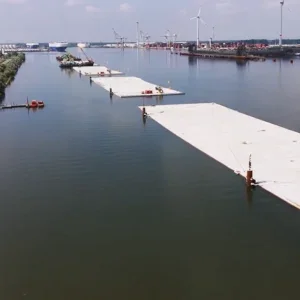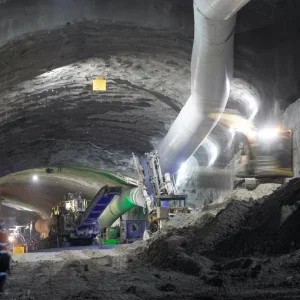Marking a milestone on Section 2 of the Channel Tunnel Rail Link (CTRL) boring is now complete on the first tunnel, following the breakthrough of the 8.15m diameter Herrenknecht slurry TBM on the second of two tunnels under the River Thames.
Contract 320 is considered one of the more critical sections of the 39km long Section 2, between St Pancras in Central London and Ebbsfleet in north Kent. However, the Hochtief/Murphy JV incorporated new techniques, won awards and shaved 50 days off the scheduled time on the US$236M contract.
“We have now set the standard for other contractors to follow,” James O’Callagahn, managing director of J Murphy & Sons, told journalists at a ceremony to mark the breakthrough at the beginning of October.
Passing through clay, gravel, chalk and flint, and handling water pressures of up to 4.5 bar, the Hochtief/Murphy JV constructed the 2.5km long tunnel in six months, and posted excellent advance-rates, including 170m in one week.
Breakthrough of both tubes involved the use of glass-fibre bars (GFRB) instead of steel reinforcement for construction of the diaphragm headwalls. The first time such a method has been used in the UK, it allowed the TBM’s disc cutters cut through the wall with ease before entering a pressurised sealed chamber. This technique also helped the project win the Major Project Award at this year’s Tunnelling Industry awards, presented by the BTS and T&TI.
Union Railways (North), a subsidiary of London and Continental Railways (LCR), is the client responsible for the construction of Section 2 of CTRL. Rail Link Engineering is the designer and project manager of the whole CTRL project, and is a consortium made up of Arup, Bechtel, Halcrow and Systra. The project is being partly financed by the European Union through the Trans European Network programme.
See T&TI, April 2003 p24, for details of the breakthrough technology, and September 2003 (CTRL 2 supplement) p34, for the contract details.







